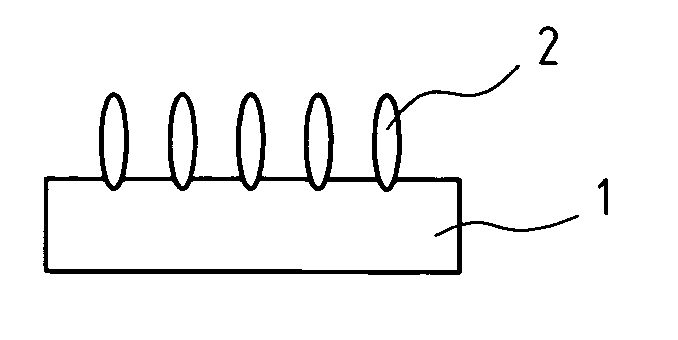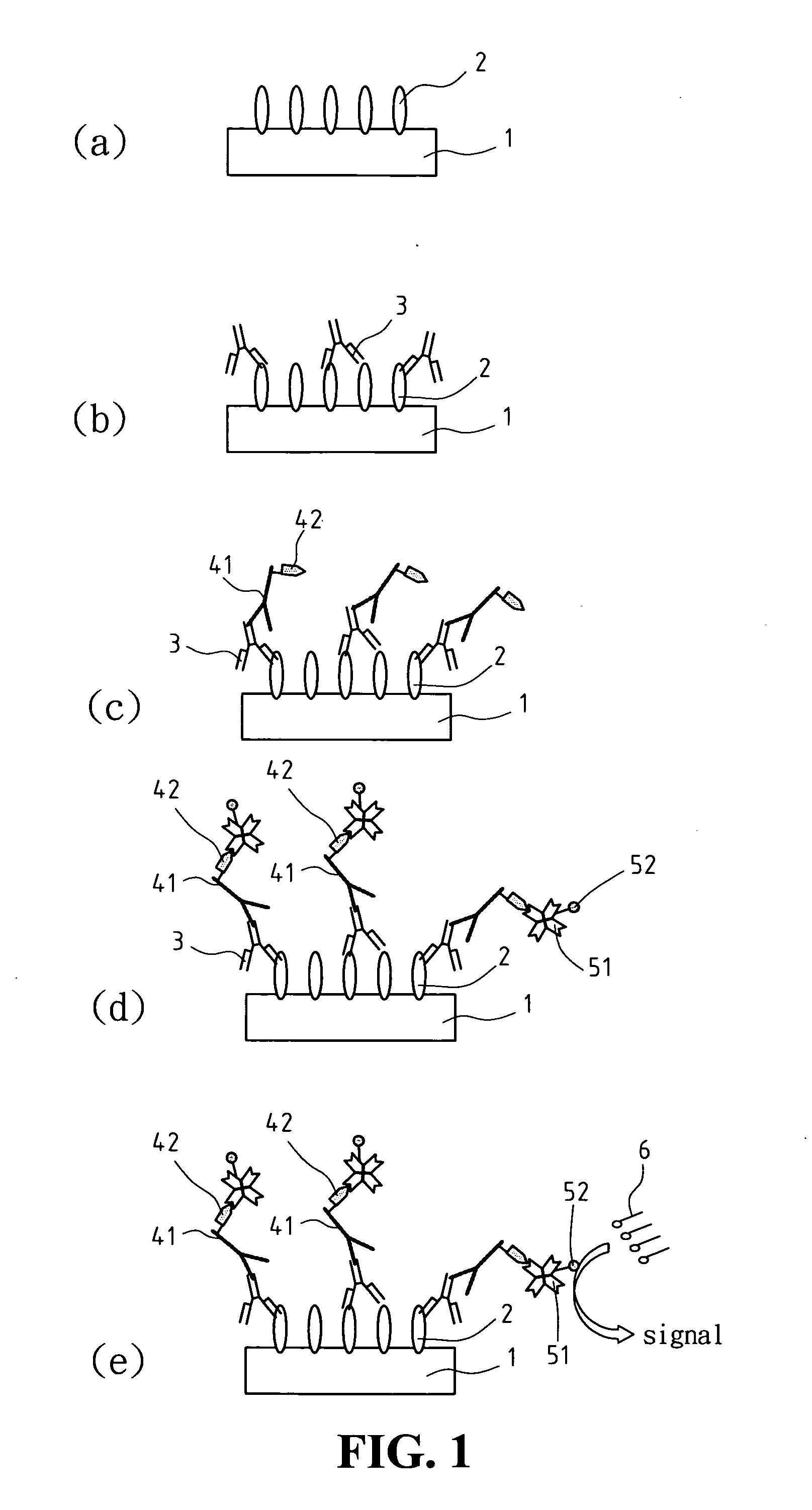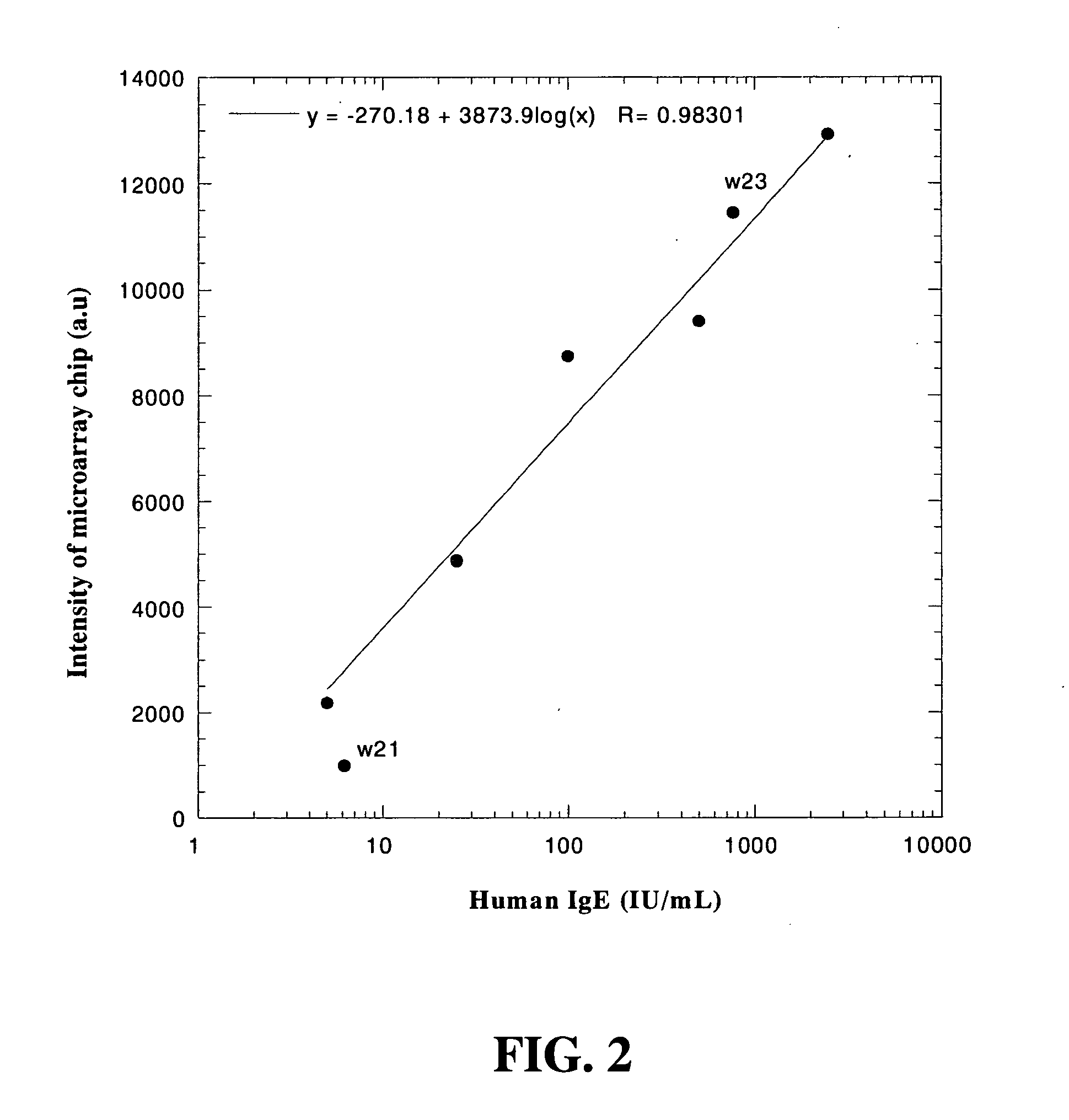Microarray chip for detection of immunoglobulin
a microarray and immunoglobulin technology, applied in the field of microarray chips for immunoglobulin detection, can solve the problems of clinical symptoms of allergy, allergic reactions that may become life-threatening, allergic symptoms, etc., and achieve the effect of avoiding interference and high quantum yield
- Summary
- Abstract
- Description
- Claims
- Application Information
AI Technical Summary
Benefits of technology
Problems solved by technology
Method used
Image
Examples
example 1
Preparation of Microarray Chip for Allergen-specific Immunoglobulin Detection
[0054] An allergen solution is prepared by using either commercially available products or the extract isolated from allergen raw materials. The allergen solution is prepared at concentrations of 0.01-10 mg / ml depending on allergens. Glycerol might be added in a final concentration of 5-50% to facilitate the subsequent immobilization process and preservation.
[0055] A glass substrate is provided as a solid substrate and coated with a layer of amine-terminated silane to act as a reactive layer to allergens.
[0056] By means of a microarray instrument, allergens are spotted onto the surface of the amine-terminated solid substrate. The allergen solution is spotted as a small dot of about 150 μm in diameter, with each dot about 300 μm apart. Depending on the number of allergens tested, a spot density of at least 300-484 dots / cm2 can be achieved. Spotting is carried out at 40-90% relative humidity and room tempe...
example 2
Allergen-specific IgE Detection Using Microarray Chip of the Present Invention
[0057] A microarray chip for allergen-specific IgE detection is prepared according to the example 1. A 2-10 folds diluted serum sample is put in contact with the microarray chip and incubated at room temperature to 42° C. to allow the binding of serum IgE with the spotted allergen. After 15 min to one hour, the microarray chip is washed with a buffer solution (for examples, PBS, PBST, or TBST (tris phosphate buffer)) to remove unreacted reagents. Then, a solution of anti-IgE monoclonal antibody conjugated with biotin is added and incubated for another 15 min to one hour. The microarray chip is subsequently washed again with a buffer solution to remove unreacted anti-IgE monoclonal antibody.
[0058] Next, a HRP-streptavidin conjugate is added and incubated to bind with the captured biotin-conjugated antibody. After 15 min to one hour incubation, unreacted HRP-streptavidin conjugate is washed off using the b...
example 3
Establishment of Calibration Curve and Detection of Total IgE Concentration in Serum Samples
[0059] A microarray chip for total IgE concentration detection is prepared according to the example 1 except that a polyclonal anti-IgE antibody is spotted on the reactive layer of the microarray chip. Next, the microarray chip is used to react with various concentrations of hIgE, following the procedure described in Example 2 with the exception of replacement of serum samples with the standard hIgE solutions. Standard hIgE solutions at 5, 25, 100, 500, and 2500 IU / ml concentrations are used to obtain the calibration curve.
[0060] In addition, two serum samples, designated as W21 and W23, are also assayed as a negative and a positive serum sample, respectively. The total IgE concentrations of W21 and W23 were predetermined as 12.8 and 1522 IU / ml, respectively, using a commercial product (UniCAP-100, Sweden Pharmacia Diagnostics Inc.).
[0061] The result shown in FIG. 2 indicates that the dete...
PUM
| Property | Measurement | Unit |
|---|---|---|
| volume | aaaaa | aaaaa |
| temperature | aaaaa | aaaaa |
| concentrations | aaaaa | aaaaa |
Abstract
Description
Claims
Application Information
 Login to View More
Login to View More - R&D
- Intellectual Property
- Life Sciences
- Materials
- Tech Scout
- Unparalleled Data Quality
- Higher Quality Content
- 60% Fewer Hallucinations
Browse by: Latest US Patents, China's latest patents, Technical Efficacy Thesaurus, Application Domain, Technology Topic, Popular Technical Reports.
© 2025 PatSnap. All rights reserved.Legal|Privacy policy|Modern Slavery Act Transparency Statement|Sitemap|About US| Contact US: help@patsnap.com



